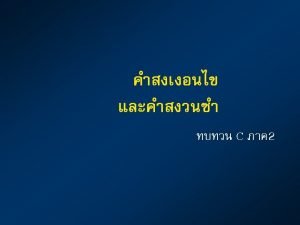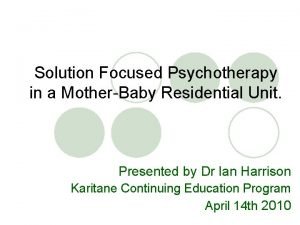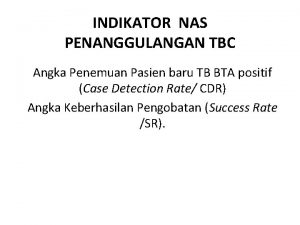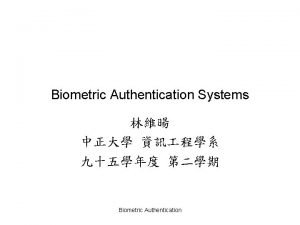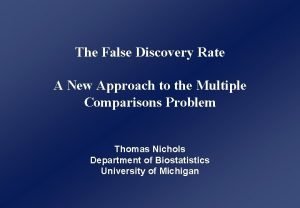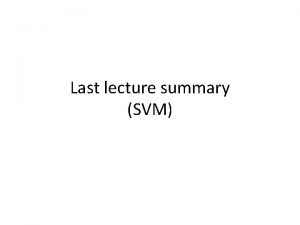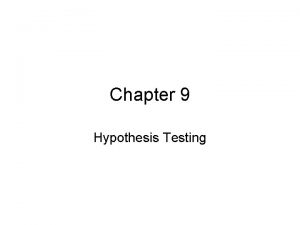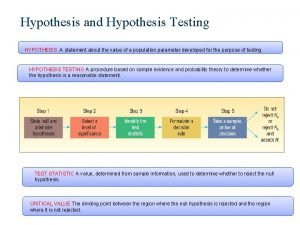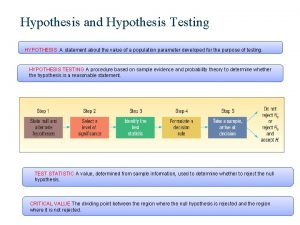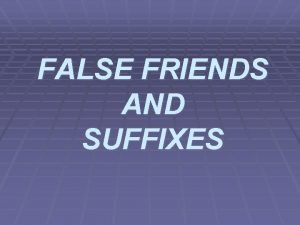Szapudis talk False Detection Rate Simultaneous hypothesis testing












- Slides: 12

Szapudi´s talk – False Detection Rate Simultaneous hypothesis testing - Setting the statistical significance Detections of Non-Gaussianity in CMB observations • Brief review of detections/methods used to set the statistical significance. • Application of FDR to individual statistical methods. • Application of FDR to a combination of statistical methods? . • What is the appropriate method for assessing the statistical significance of localized detections? .

CMB: Non-Gaussianity tests Real space Spherical Harmonic space Wavelet space Blind tests – The alternative to the null hypothesis is not specified.

Non-Gaussianity tests: Real Space Based on the temperature fluctuation observed at each pixel i, ΔT(i) Tests (detections): • Genus (Park 2003). • N-point correlation function (Eriksen et al. 2003, Eriksen et al. 2004). • Minkowski functionals and length of skeleton (Eriksen et al. 2004). • Extrema (Larson & Wandelt 2004) • 2 -point correlation function of maxima and minima (Tojeiro et al. 2005, Larson & Wandelt 2005) Courtesy of WMAP Science Team

Non-Gaussianity Tests: Spherical Harmonic Space Based on the complex coefficients Tests (detections): • Power spectrum distribution (Eriksen et al. 2003, Hansen et al. 2004). • Correlations between adjacent multipoles (Prunet et al. 2004).

Non-Gaussianity Tests: Wavelet Space Based on wavelet coefficients calculated at each pixel i, at a given scale R, wv(i, R). Tests (detections): • Kurtosis – Spherical Mexican Hat Wavelet (Vielva et al. 2003, Mukherjee & Wang 2004, Mc. Ewen et al. 2004, Liu & Zhang 2005, Cruz et al. 2006). • Skewness – Real Morlet Wavelet (Mc. Ewen et al. 2004, Liu & Zhang 2005). • Number and area and volume of spots – SMHW (Cruz et al. 2004, Cruz et al. 2006). • Higher Criticism – SMHW (Cayon et al. 2005, Cruz et al. 2006).

Testing the null hypothesis through Monte Carlo simulations Simulating a CMB map: At each pixel (i – θ, ψ) 1) Bl – Antenna Cl - Cosmology 2) Add Noise - dispersion given by simulated experiment. Mask – Galaxy plus point sources (zeros to the pixel in the mask). Monopole and dipole removal.

Testing the null hypothesis through Monte Carlo simulations Map ΔT(i) Test statistic: Over whole map or Different combinations of pixels (N-point corr. ) alm Test Statistic: Several multipoles or Several combinations of multipoles (bispectrum) Wavelet coeff. wv(i, R) at scale R Test Statistic: Over whole map at each scale and/or above/below threshold (spots)

Statistical Hypothesis Testing • Testing the null hypothesis with a single configuration (confidence level). • Simultaneous hypotheses testing : - Χ 2 Example (Mc. Ewen et al. 2004) SMHW Skewness and kurtosis – 24 statistics. Detection at the 99. 9% significance level. - Conservative significance level Based on marginal distribution of all statistics. Ex. Above 95. 3% significance level. - Hypothesis Test SMHW Kurtosis- scale 9 above 99% confidence level. Larson & Wandelt, astro-ph/0505046 (maximum risk of false detection at the same level as the claimed significance)

Statistical Hypothesis Testing (FDR) • Simultaneous Hypotheses testing – False Detection Rate - Control of the fraction of false discoveries (detections) over the total number of discoveries. - No assumption on the Gaussianity of the error distribution. - Correlations between statistics can be taken into account (? ). αx 100 % of discoveries may be mistakes.

False Discovery Rate – Ex. Wavelet Space 16 tests / statistical test No correlations, α=0. 05, detection scales=9, 8, 7 Correlations, α=0. 1, detection scales=9, 8, 7 No correlations, α=0. 1, detection scales=9, 8 Correlations, α=0. 2, detection scales=9 Figs from Cruz et al. 2006

False Discovery Rate – Ex. Wavelet Space Statistical Test No Correlations CN=1 CN=3. 38 (16 scales) α |scales (detect. ) α|scales (detect. ) Kurtosis α=0. 05 9, 8, 7 α=0. 1 9, 8, 7 Max α=0. 05 9, 10 α=0. 2 9, 10 Higher Criticism α=0. 1 9, 8 α=0. 2 9 Area above 3σ α=0. 05 8, 9 α=0. 2 8, 9 Area above 3. 5σ α=0. 05 9, 8 Area above 4σ α=0. 05 9, 8, 10 α=0. 2 9, 8, 10 Area above 4. 5σ α=0. 1 9, 8 α=0. 2 9 Acknowledgement – M. Cruz

What is the appropriate method for setting the statistical significance? • Only considering detections based on SMHW: 112 statistical tests. - Different statistical methods. - Several scales. • Is it possible to assess the statistical significance of all detections all together? • The pixels behind some of the detections are localized.
 True or false true or false
True or false true or false False and false
False and false Talk read talk write template
Talk read talk write template Amateurs talk strategy professionals talk logistics
Amateurs talk strategy professionals talk logistics Problem talk vs solution talk
Problem talk vs solution talk Rumus cure rate tb paru
Rumus cure rate tb paru What is a hypothesis
What is a hypothesis Developing null and alternative hypothesis
Developing null and alternative hypothesis Alternativehypothesis
Alternativehypothesis Protoplanet hypothesis weakness
Protoplanet hypothesis weakness False acceptance rate
False acceptance rate False discovery rate calculator
False discovery rate calculator False positive rate
False positive rate

